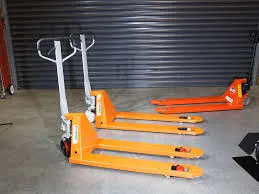


The Significance of Anti-Fall Arresters in Workplace Safety
In industrial settings, construction sites, and various outdoor environments, safety is paramount. One of the most critical concerns is the risk of falls, which can result in severe injuries or even fatalities. To combat this hazard, the use of anti-fall arresters has become increasingly prevalent. These devices play a vital role in ensuring worker safety, and understanding their importance is essential for both employers and employees.
Understanding Anti-Fall Arresters
Anti-fall arresters, also known as fall protection devices, are designed to prevent falls from heights and to minimize the risk of injury when falls do occur. These devices can take various forms, including harnesses, lifelines, and safety nets. They work by arresting a fall and distributing the force of impact across the body, reducing the chances of injury. In many jurisdictions, the use of these devices is not just recommended but mandated by occupational safety regulations.
Why Falls Occur
Falls from heights are among the leading causes of workplace injuries. They can occur due to a variety of factors, including slippery surfaces, inadequate training, improper use of equipment, and failure to adhere to safety protocols. Statistics reveal that a significant portion of workplace fatalities can be attributed to such incidents, underscoring the need for effective fall protection measures.
The Role of Anti-Fall Arresters in Preventing Falls
The primary function of anti-fall arresters is to prevent falls before they happen, and they do this through a combination of prevention and mitigation strategies. The use of a well-fitted harness and an appropriate lanyard attached to a secure anchor point can significantly reduce the risk of a fall. When a worker slips or loses balance, the fall arrester immediately engages, halting the descent and keeping the worker suspended until they can be safely rescued.

Importance of Proper Training
While anti-fall arresters are critical safety devices, their effectiveness largely depends on proper training and usage. Workers must be trained on how to properly use these devices, including how to wear harnesses, secure lanyards, and identify safe anchor points. Employers must provide regular training sessions and ensure that all employees understand the importance of compliance with safety standards.
Regular Inspections and Maintenance
To ensure that anti-fall arresters function properly, regular inspections and maintenance are essential. Safety harnesses should be checked for wear and tear, and lanyards should be inspected for fraying or damage. It is crucial for both employers and employees to remain vigilant in maintaining equipment, as the effectiveness of these devices can diminish over time if they are not properly cared for.
The Psychological Aspect of Safety
Moreover, the presence of anti-fall arresters can instill a sense of safety among workers. When employees know that effective safety measures are in place, they are more likely to focus on their tasks without the pervasive fear of falling. This psychological benefit can enhance productivity and contribute to a positive workplace atmosphere.
Conclusion
In conclusion, anti-fall arresters are indispensable tools in promoting workplace safety. Their role in preventing falls, combined with the necessity for proper training and regular maintenance, emphasizes the importance of a comprehensive safety culture. By prioritizing the use of these devices and fostering a culture of safety, employers can significantly reduce the risk of falls and create a safer working environment for all employees. Investing in safety is not just a regulatory obligation but a moral imperative that protects lives and enhances productivity. As the construction industry and other sectors continue to evolve, the commitment to safety through the use of anti-fall arresters must remain a top priority.



